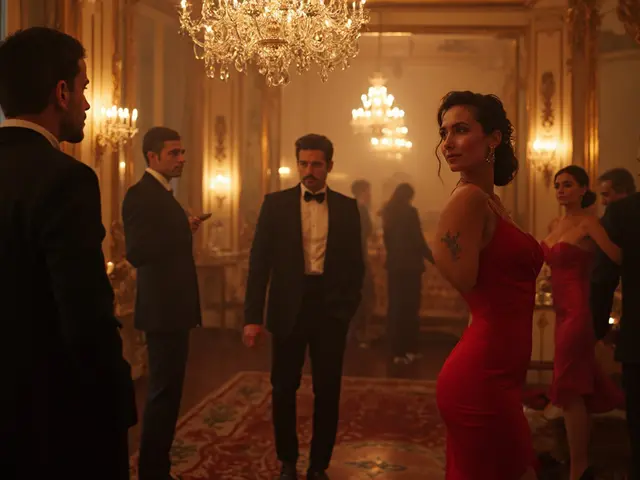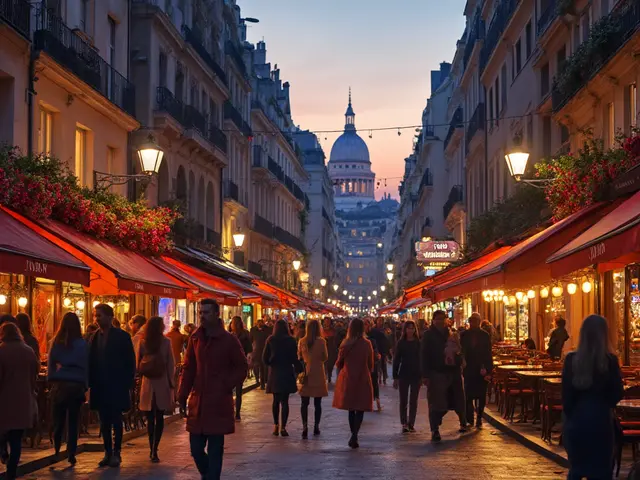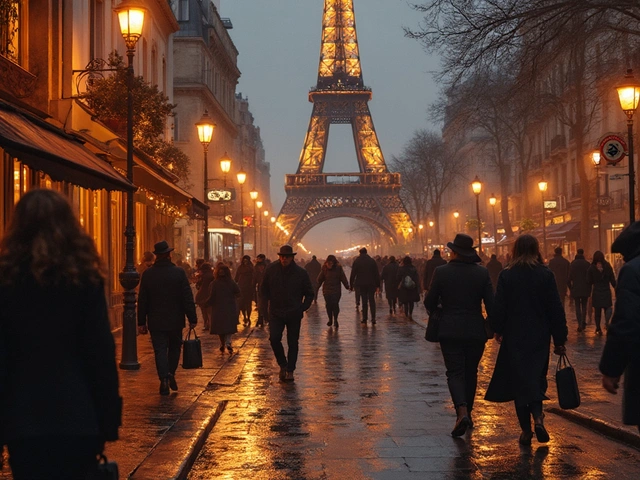Paris has long been a city where beauty, desire, and expression blur together. Walk through Montmartre at sunset, and you’ll see painters capturing the curve of a woman’s shoulder as she leans against a café railing. In a dimly lit bar in Le Marais, a man in a tailored suit whispers to a woman in a velvet dress - not about dinner, but about a sculpture he wants her to model for. This isn’t fiction. It’s the quiet reality of how art and escort services have intertwined in Paris for over a century.
Artists and Their Muse-Models
In the 1890s, Toulouse-Lautrec didn’t just paint courtesans - he spent nights with them. His sketches of La Goulue and Jane Avril weren’t staged studio portraits. They were snapshots of women who lived on the edges of society, paid to be seen, touched, and remembered. Many of these women weren’t prostitutes in the modern sense. They were performers, companions, and muses - roles that overlap heavily with what we now call escort services.
Today, that tradition hasn’t vanished. It’s evolved. Parisian escorts who work with artists often don’t advertise themselves as such. They list themselves as “modeling companions” or “creative collaborators.” Some agencies specialize in connecting clients with women who have backgrounds in dance, theater, or fine arts. These aren’t random encounters. They’re curated experiences: a woman who knows how to pose for chiaroscuro lighting, who can hold a stillness for 20 minutes while an artist sketches her profile, who understands the difference between being admired and being objectified.
The Studio as Sanctuary
Unlike in cities where escort services are strictly transactional, Paris has a long-standing cultural tolerance - even admiration - for the fusion of sensuality and creativity. In the 11th arrondissement, a former textile factory now hosts a collective of painters, sculptors, and photographers. One of its regulars is a woman who goes by the name Elise. She doesn’t offer sexual services. She offers presence. For €150 an hour, she sits for portraits, reads poetry aloud while someone paints her hands, or walks through the Luxembourg Gardens with a client who wants to capture the way her coat catches the wind.
Her clients aren’t just wealthy men. They’re women too. A documentary filmmaker from Lyon hired her to be the subject of a short film about aging and beauty. A ceramics artist from Lyon asked her to hold a clay bowl as she knelt - the image became the cover of a poetry collection. Elise doesn’t see herself as an escort. She calls herself a “living canvas.”
Legal Boundaries and Cultural Blind Spots
France legalized prostitution in 2016, but only under strict conditions: no soliciting on the street, no operating brothels, no advertising. Escort services operate in a gray zone. Many work independently, using encrypted apps and private appointments. Artistic collaborations are rarely flagged by authorities - because they don’t look like sex work. A client paying €200 to have a woman sit quietly while he paints her isn’t breaking any law. But if that same woman later receives a cash payment for intimacy, the line becomes legally and morally murky.
There’s a double standard. A woman modeling nude for an art class is celebrated. A woman doing the same for a private client is labeled. Yet both involve consent, compensation, and performance. The difference? One happens in a school. The other happens behind closed doors.
Parisian artists often defend these arrangements. “We don’t need to sexualize to see beauty,” says Lucien Moreau, a sculptor whose studio in Saint-Germain-des-Prés has hosted over 40 women for modeling sessions since 2018. “But we do need to see them as whole people - not just bodies. That’s why I only work with women who choose to be here, who set their own rules, and who can walk away anytime.”

The Rise of the Creative Escort
A new generation of women in Paris are redefining what escorting means. Many have degrees in art history, theater, or fashion design. Some run Instagram accounts showcasing their work as muses - not in lingerie, but in vintage gowns, holding antique books, standing beside Renaissance reproductions. Their clients aren’t looking for sex. They’re looking for connection, authenticity, and aesthetic resonance.
One woman, Camille, started offering “art dates” after leaving a corporate job in marketing. For €180, she’ll take a client to the Musée d’Orsay, then sit with them in the café across the street while they sketch each other. She doesn’t touch. She doesn’t kiss. She talks about Degas, about how he painted dancers not because they were sexy, but because they were tired. Her clients leave with sketches, stories, and sometimes, friendships.
These aren’t outliers. A 2024 survey by the Paris Institute of Cultural Economics found that 31% of independent escorts in the city reported that at least half their clients engaged them for non-sexual artistic or emotional companionship. That number has doubled since 2020.
Why Paris? Why Now?
Paris is unique because it never fully abandoned the idea that beauty and desire are part of the same human impulse. Unlike cities that criminalize or stigmatize sex work, Paris has always allowed it to exist in the shadows - quietly, elegantly, artistically.
Today, with rising living costs and the collapse of traditional creative jobs, more women are turning to escorting not as a last resort, but as a flexible career that lets them control their time, their image, and their boundaries. For many, art is the bridge - the reason they’re paid more, treated with more respect, and remembered beyond a single night.
It’s not about romance. It’s about recognition. The woman who sits for an artist isn’t just a body. She’s a collaborator. The man who pays to have her there isn’t just a client. He’s a witness.

The Unspoken Rules
If you’re considering this path in Paris - whether as a client or a companion - there are unwritten rules:
- Never ask for photos unless offered. Many women keep their work separate from social media.
- Don’t assume intimacy is included. Most artistic sessions are strictly non-sexual unless explicitly negotiated - and even then, it’s rare.
- Respect the silence. Many women work best in quiet. Talking too much breaks the mood.
- Pay on time. Artists and companions both value reliability over charm.
- Leave your ego at the door. This isn’t about you. It’s about the art, the moment, the shared humanity.
Those who follow these rules often return. Not because they want to “get something,” but because they’ve found something rare: a space where beauty is honored, not exploited.
What This Means for the Future
The line between escort and artist is fading in Paris - not because society has changed, but because the women working in this space have refused to be defined by it. They’re not asking for permission. They’re creating their own categories.
What’s emerging isn’t just a new kind of escort service. It’s a new kind of intimacy - one rooted in mutual respect, creative exchange, and the quiet understanding that art doesn’t need to be pure to be powerful.
Paris will keep its lights dim, its doors closed, and its secrets whispered. But if you know where to look, you’ll find them - the women who sit still for painters, the men who pay to hear poetry, the moments that last longer than a night, and the art that’s born from them.
Are escort services legal in Paris?
In France, selling sex isn’t illegal, but buying it is - since 2016. Escorts can work independently, but advertising, soliciting, or running brothels is prohibited. Many operate through private appointments or creative collaborations, which often fall outside legal scrutiny because they’re framed as artistic or companionship services.
Can you really make money as an escort through art in Paris?
Yes. Many women in Paris earn between €150 and €300 per hour for non-sexual artistic collaborations - modeling, posing, conversing, or attending events with clients. These rates are often higher than standard escort services because they require cultural knowledge, poise, and creativity. Some earn more by building long-term relationships with artists, galleries, or filmmakers.
Is this just a romanticized version of sex work?
It’s not romanticized - it’s real. Many women in this space explicitly reject the idea that their work is about sex. They’re artists, performers, and cultural workers. The art connection gives them control over how they’re seen and paid. It’s not a fantasy. It’s a strategy for dignity in a system that often treats women as disposable.
Do men and women both hire escorts for art in Paris?
Yes. While men still make up the majority of clients, the number of women hiring companions for artistic or emotional support has grown sharply since 2020. Female clients often seek women as companions for photography projects, writing retreats, or simply to feel seen in a city that can feel isolating.
How do you find legitimate artistic escort services in Paris?
There are no public listings. Most connections happen through word-of-mouth, private networks, or curated platforms that vet clients and companions for artistic intent. Some women maintain Instagram accounts showing their work - not as ads, but as portfolios. Look for profiles that feature paintings, sketches, or poetry - not suggestive photos. Trust comes from reputation, not profiles.




